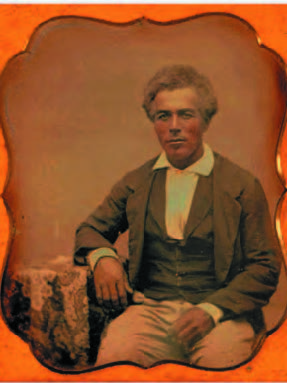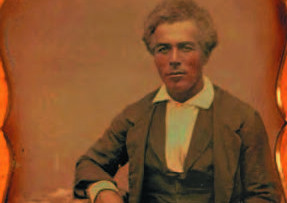
Horace King was born on September 8, 1807, in Chesterfield District, South Carolina. He was born a slave but overcame the odds and became the most respected bridge builder in Alabama, Georgia, and northeastern Mississippi during the mid-nineteenth century.
In 1830, he was purchased by John Godwin, a contractor in Cheraw, South Carolina. Two years later, Godwin moved to Girard (present-day Phenix City), Alabama, where he was hired by the town to construct the first bridge across the lower Chattahoochee River. King, his mother, brother, and sister were also brought to Girard.
Between 1838 and 1840, King supervised construction of Godwin’s massive toll bridges across the Chattahoochee River at West Point, Eufaula, and Florence (present-day Florence Marina), Georgia.
In the early 1840s, King built bridges in Columbus, Mississippi, and Wetumpka, Alabama, and in 1841, he supervised the construction of the Russell County Courthouse in Alabama. In 1845, King bridged the Tallapoosa River at Tallassee, Alabama. Later that year, he oversaw construction of three small bridges near Steens, Mississippi. In February of 1846, King gained his freedom through an emancipation bill introduced in the Alabama legislature, and by 1860, he was one of the wealthiest free African Americans in Alabama.
Because of his exceptional talents as an architect, engineer, and contractor, King was permitted to travel without restrictions throughout the Deep South, and in 1839, King was allowed to marry Frances Gould Thomas, a free African American woman. Her legal status guaranteed freedom for their children. During the early 1850s, the state of Alabama hired King to perform carpentry work, including elegant circular staircases, on the new capitol building in Montgomery.
In the mid-1850s, King built Moore’s Bridge over the Chattahoochee River on the road between Newnan and Carrollton, Georgia. By 1858, King and his family had moved near Moore’s Bridge where his wife, Frances, and their children collected tolls and farmed until July 1864, when the bridge was burned by Union forces. Frances died in Girard about three months later, and in June 1865, King married Sarah Jane Jones McManus.
During the Civil War, King was forced to work for the Confederacy, creating blockades on the lower Apalachicola River in Georgia and the lower Alabama River in Alabama. King also erected a large mill structure and supplied wood products for Confederate naval facilities in Columbus. After the war he concentrated his efforts on the reconstruction of wagon and railroad bridges, grist and textile mills, and cotton warehouses. He also built the initial Lee County courthouse in Opelika in 1867.
During Reconstruction, he served two terms in the Alabama House of Representatives. In 1872, King and his family moved to LaGrange, Georgia, where King and his sons continued to build bridges, stores, houses, and college buildings until his death, on May 28, 1885.
Resources
-
Encyclopedia of Alabama; John S. Lupold, Columbus State University; Thomas L. French, French & Associates, Columbus, Georgia, from https://encyclopediaofalabama.org/article/horace-king
-
BlackPast.org https://www.blackpast.org/african-american-history/king-horace-1807-1885/


